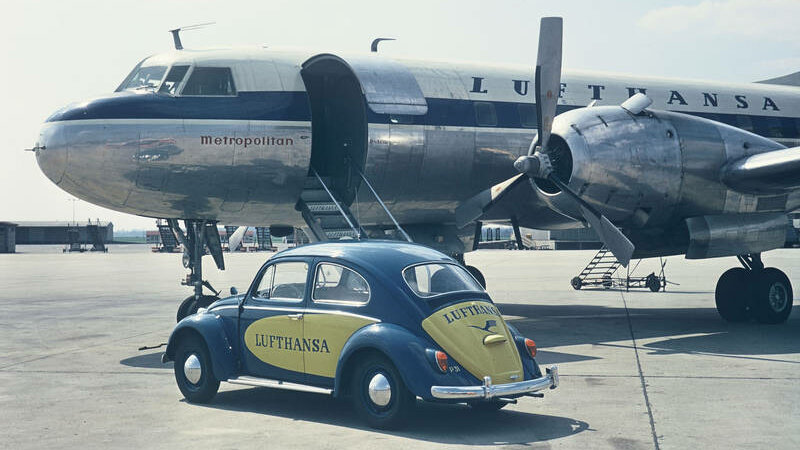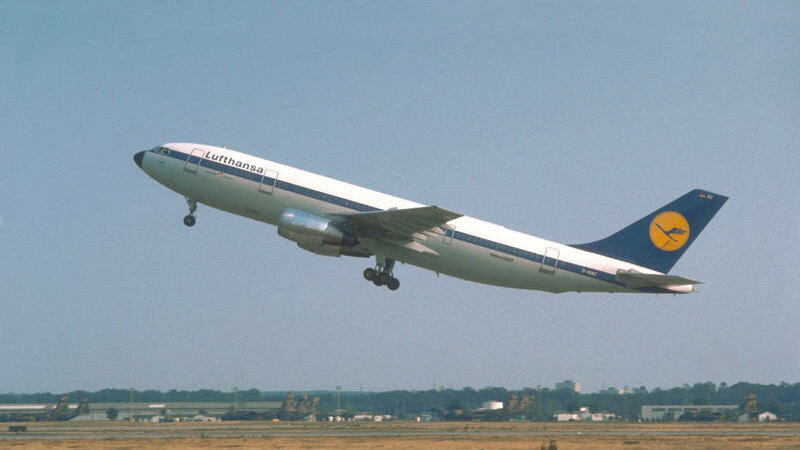The Reconstruction

Two years after the Allies dissolved the first Lufthansa (founded in 1926) in 1951, the “Aktiengesellschaft für Luftverkehrsbedarf” (Luftag) with headquarters in Cologne was founded on January 6, 1953. On August 6, 1954 Luftag bought the name, the trademark – the crane – and the colors – blue and yellow – from the first Lufthansa, which was in liquidation at the time, and has since then called itself "Deutsche Lufthansa Aktiengesellschaft” (Deutsche Lufthansa Stock Company). Multiple tasks had to be accomplished by the new airline before it could begin flight traffic: finding and buying suitable airplanes, schooling airline pilots and engineers and training air stewards. Organizational and infrastructural prerequisites for the technical maintenance of airplanes also had to be set. The ambitious project succeeded: on April 1, 1955 two Convair airplanes took off from Hamburg and Munich to commence scheduled air services.
Parallel to the development of a European route network, flights to destinations in America, Africa and the Far East were also added shortly after. Since 1958, the red rose has stood for the fulfillment of the highest comfort requirements in First Class on intercontinental routes.
In 1960, Lufthansa arrived in the age of the jet plane with the acquisition of the first Boeing B707. Simultaneously, the company transferred its long-distance operations from Hamburg to Frankfurt am Main and continued to expand its cargo business.
From Crises to Chances
This expansion was followed by a decade of crises, but also of developments. First the oil crises of 1973 and 1979, which made the prices for kerosene explode. At the same time it created a new understanding of how resources are handled and thus drove the development of fuel-efficient and quieter jet engines forwards.

Time and again Lufthansa offered innovations to their growing customer base: Wide-body aircraft with the latest technology were bought. In 1970, the Boeing B747 was deployed for the first time on long-haul routes followed by the tri-jet Douglas DC 10, and from 1976 the Airbus A300, the first wide-body twin-engine jet for medium distance flights.
The airplane developed into a means of mass transportation. Lufthansa reacted by redesigning their route network with faster connections and fewer stopovers.
Women also conquered the cockpits at Lufthansa with the training of the first two female pilots in 1986.
In the second half of the 1990s, the corporate group was faced with huge changes. On the one hand, in 1995 Lufthansa Technik AG, Lufthansa Cargo AG and Lufthansa Systems GmbH were transformed into independent companies of the aviation group and on the other hand, in 1997 Lufthansa was finally privatized. Both were meant to increase the group’s competitiveness, and contributed to Lufthansa’s long-term strategy of developing into the world-wide leading provider of air travel and air travel contiguous services.

Look to the Future
The Lufthansa Group is an aviation group with operations worldwide. It is composed of the segments Network Airlines, Eurowings and Aviation Services. Aviation Services comprises the segments Logistics, MRO, Catering and Additional Businesses and Group Functions. The latter also include Lufthansa AirPlus, Lufthansa Aviation Training and the IT companies. All segments occupy a leading position in their respective markets. As a leading European airline group, the aim of the Lufthansa Group is to take on a key role in shaping the global aviation market and to remain the first choice for shareholders, customers and employees in the future.


